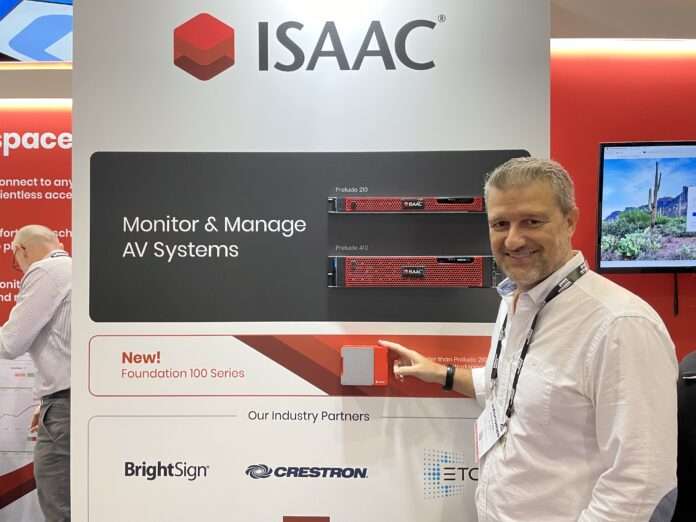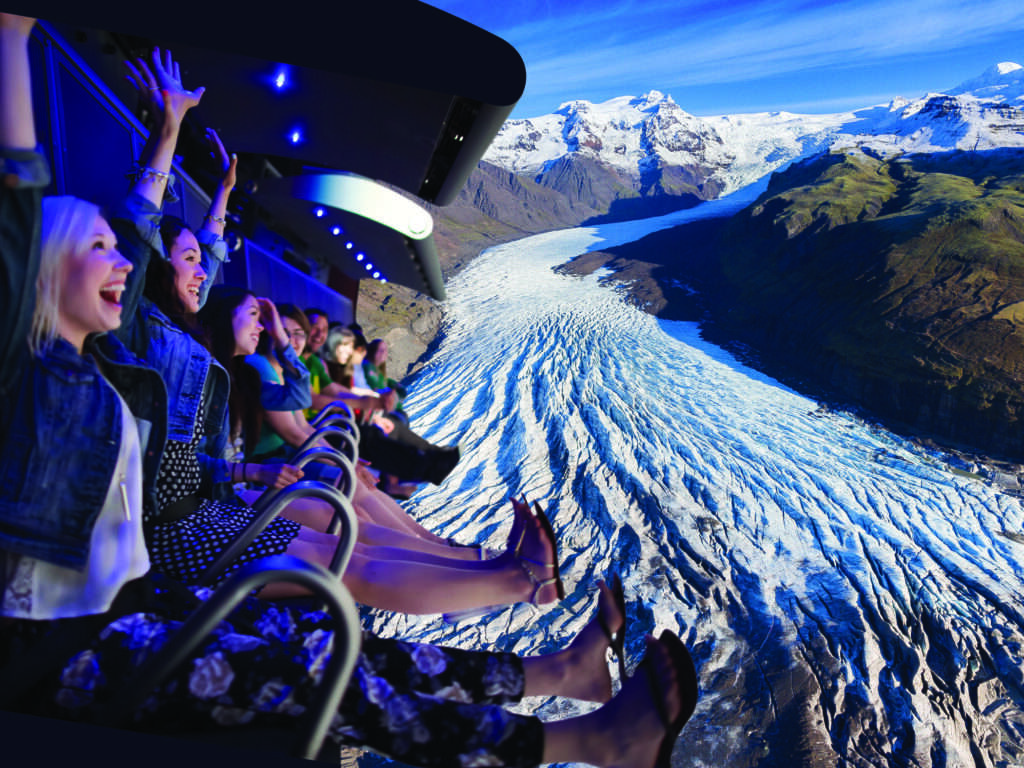Q&A with CEO Stephan Villet on the 15th anniversary of Smart Monkeys
by Judith Rubin
“It’s all about the workflow,” says Smart Monkeys CEO Stephan Villet, speaking to InPark editor Judith Rubin about how the company has grown and evolved in unexpected ways. Smart Monkeys is the creator of ISAAC, a revolutionary workflow and multimedia management platform that had its first big exposure to the industry in 2013 with its first airport installation – the Tom Bradley Terminal at LAX, which was honored with a Thea Award. Today, the company is well positioned to move forward with a multifaceted staff, and many prestigious manufacturers have aligned their products with ISAAC.
Congratulations on 15 years! What’s the single biggest milestone for the company?
We began as a service company and evolved to being a product and service company. This was not part of the original plan, but ISAAC – the product – had other ideas. The ISAAC platform is now a big part of what we’re known for.
Is themed entertainment still your primary market?
Yes and no. Again, it’s ISAAC’s fault – for being so versatile. Themed entertainment is still our first love, but ISAAC has been embraced by many different kinds of clients around the world, and this has grown the company and broadened our reach. We’ve opened distributorships in several countries, including China, Australia, Italy, France and the Benelux region. We are now working on our biggest projects ever, with our biggest clients ever, but unfortunately can’t share the details.
We’re still very much part of the attractions industry, and look forward to networking at IAAPA Expo in Orlando this year. We’re also active in the Themed Entertainment Association (TEA) – we are a headline sponsor for several TEA mixers in Orlando, and will host an open house in October. Our presence in Orlando has grown substantially.
How has the company itself adapted to address the changes?
For one thing, we have grown to have 26 team members (we started 15 years ago with two). More dramatically, we re-organized the company this year. We’re separating the service, which is niche-oriented, from the product, which is broader. This establishes a more standardized way to get the product to customers, through a resale network and distributors.
Smart Monkeys now has three departments, (design, operations, and product) each with its own leader and team, and its own roadmap and goals, although some projects encompass all departments. As CEO I concentrate on strategy and growth, while the team is more focused on project execution and product development.
Pre-Covid, almost all of us were based in Miami. We’ve since expanded the Orlando presence, plus we have staff working remotely in eight US states and Canada. Despite logistical challenges, this arrangement allows us to build stronger teams, hire the very best talent and better support our clients.
We are mainly working B2B, so in a sense, the evolution of how we work in response to today’s conditions reflects how our clients also now work. As a result, we are well aligned with client needs on both the product and service side, and able to take a more proactive, collaborative role.
A very big part of what we do today is designing: the IT- centric part of a design. We also do a lot on the side of remote support: 24/7 support for the biggest clients. We stay involved throughout the project process, and often for years after, providing support.
The experience we gained by developing a product has trickled down to our project service offering. For instance, we’ve extended our service offering to include custom application development, which has proved quite successful. We can’t wait to share more info on some of the major projects we are working on!
Please give us a refresher on ISAAC.
Attraction operators have very specific needs that have generally called for bespoke solutions and programming to facilitate interacting with systems. (Yes, there are interactive smart devices people use every day, but these were developed by companies with huge workforces. In a niche industry, the resources are lacking to achieve that type of mass solution.)
ISAAC makes it possible to skip having to create yet another new custom environment, by providing a platform and portal – an ecosystem – that can be customized for any and all occasions, and that can expand and evolve its functionality while maintaining a consistent user interface. What the system enables the operator to do in terms of running an attraction will depend on their needs – but interactions within the system (user access, creating profiles, making decisions, scheduling, etc.) are the same for everything. It’s all about the workflow.
It’s sort of like your favorite organizing software, on steroids! ISAAC is really a user interface framework with some features ready to be used, that allows users to concentrate on the custom part they need embedded in order to control their equipment. The fact that it already exists and runs in a basic form makes it simpler to present to an end user – a reseller or integrator can demonstrate it to their client without having to create sketches. And because it provides this framework, ISAAC helps programmers concentrate on the creative part of what their client needs. It’s also modular, and substantially reduces hardware requirements while providing redundancy by using virtual equipment.
Who needs ISAAC today?
I am absolutely certain that almost every project could benefit – not for any specific out-of-the box feature, but because it gives a foundation, a place to begin when assembling a custom system. Right now, the drive to the market is largely because of third- party entities, such as integrators, who realize ISAAC will help them sell their services and do a better job overall.
Also feeding demand is the ability to support today’s extremely diverse range of projects: media-centric experiences, rides and attractions, cruise ships, sophisticated audio, theater, multimedia systems that run through an entire venue (such as a theme park or airport), both guest-facing and user-facing, etc.
Some of the biggest venues in the world today rely on ISAAC to operate their systems. The idea is to have a stable base, a single portal from which to operate the system. With ISAAC in place, we know we are going to have the resources and the basis for building the custom system. You have what you need without having more than you need.
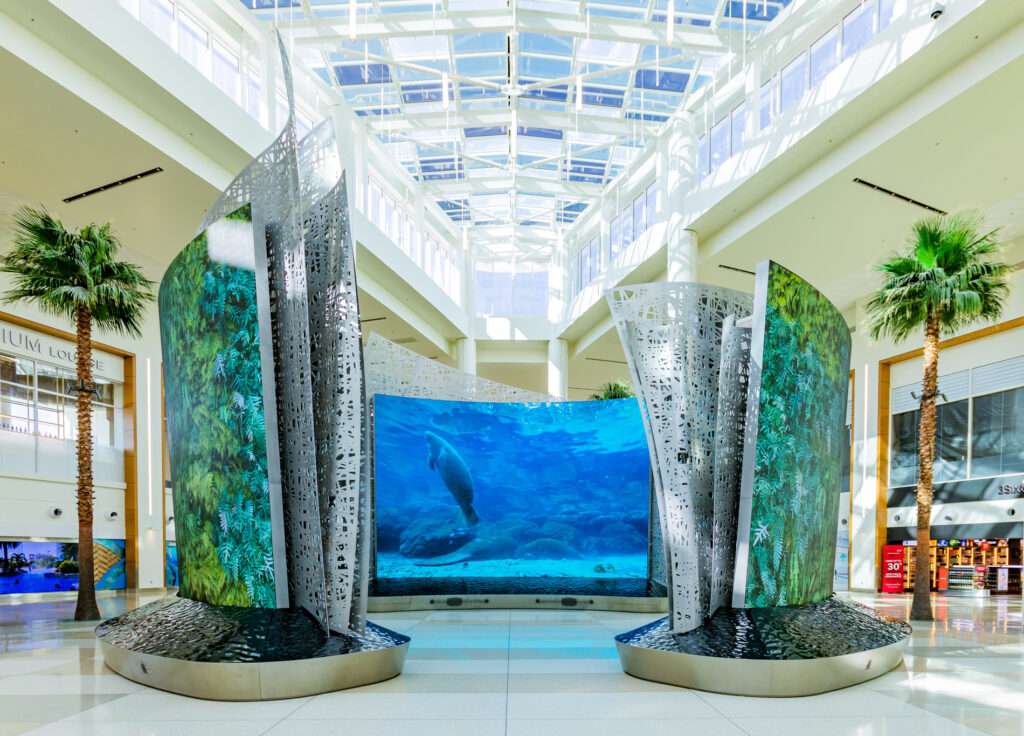
Tell us more about ISAAC and airports.
LAX was a decade ago, but in the last 12 months alone we delivered systems and services for airports in Doha, Nashville, Newark, and Orlando, and there are more to come. Airports have big media – getting bigger all the time – and they need a way to operate that media without having to get hands-on with the media servers.
How do ISAAC partnerships work?
Every new partnership adds value by making new features and potentialities available within the ISAAC ecosystem. New partners come in every day, and this keeps the platform evolving and growing. Users can tap the new features to expand the capabilities of their systems without new programming. [See sidebar]
Any system that can be programmed can be tied back to ISAAC. Any manufacturer that wants to support ISAAC can do so by implementing the available API, which is fully documented and supported. There is no approval process per se, and no fee – they do the work and follow the protocol; we test it and create a branded module. The API is limited to a very specific feature set, which protects the integrity of the ISAAC foundation.
You’ve achieved considerable success and acceptance for ISAAC. But that hasn’t been simple, has it?
Initially – for the first few years – there was pushback, but then an incredible shift and it’s a very big part of our industry today. For our industry’s younger generation, the question is not whether to use the technology, it’s how to use it in the right way, the best way.
The product is much easier to show and explain today than it was in its first years. And there’s deeper understanding of the benefits of an IT-style approach within our three primary markets – entertainment, museums and architectural media. Within those markets, one-off projects and the need to refresh and innovate year after year are the rule. They continue to need – increasingly so – non-standardized technologies for the sake of creating experiences that are unique and compelling. Clients and designers are assembling tech in a specific way, always pushing the boundaries. At the same time, it is rarely feasible or sustainable for operators to maintain a fully staffed department to monitor that type of install.
Operators need systems that are smart but that can be operated with a low-tech entry level; systems that are smart enough to internally recognize and resolve issues as they arise. They need a tech partner who will listen to them and support them and their team, and do it reliably, over the long term. We don’t deliver the “wow” factor – we deliver the system that enables you to deliver the “wow” factor, 24/7/365.
Listening to what operators need is really our forte, what we do. Again, it’s all about the workflow. •
ISAAC partners, a partial list
Brightsign
Crestron
ETC
Medialon
Nanolumens
Node-RED
OMNIS by MegapixelVR
PIXERA
PIXILAB
Q-SYS
Realmotion
ZeeVee
Smart Monkeys: Some of the many projects over the years
Expo 2010 Shanghai – Electrosonic selected Smart Monkeys to provide Medialon show control programming for China Mobile and China Telecoms Information & Communications Pavilion, and for the USA Pavilion.
Universal’s Cinematic Spectacular (2012) – Smart Monkeys designed a system to run two sophisticated attractions off one show control system, operable from a single control booth.
Big “O” show for Expo 2012 Yeosu, (2013 Thea Award recipient) – Smart Monkeys programmed a show control system to synchronize hundreds of devices and special effects.
2013 – Honored with more than a dozen awards, the Tom Bradley Terminal multimedia presentation system at LAX uses ISAAC to allow the operator to schedule all media in the terminal from a single interface.
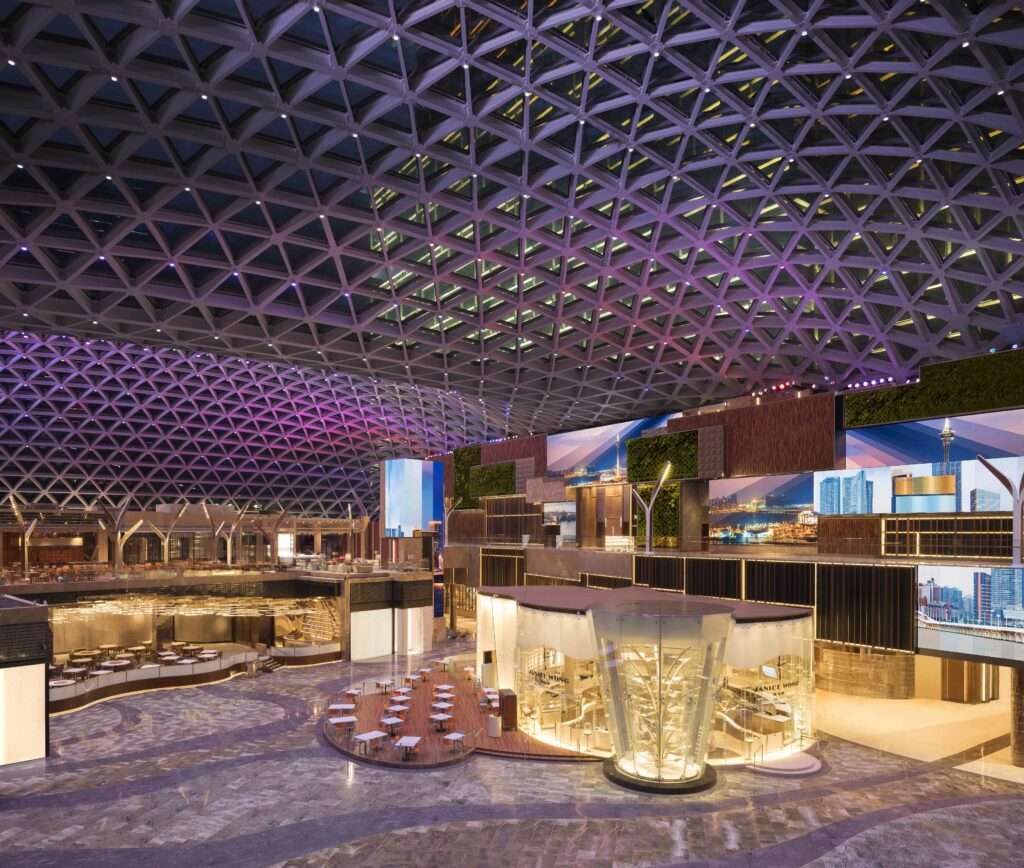
2018 – MGM Cotai spectacle, Macau – Smart Monkeys collaborated on designing the video and control center, and partnered with Electrosonic to design and program a fully IT-integrated system featuring ISAAC
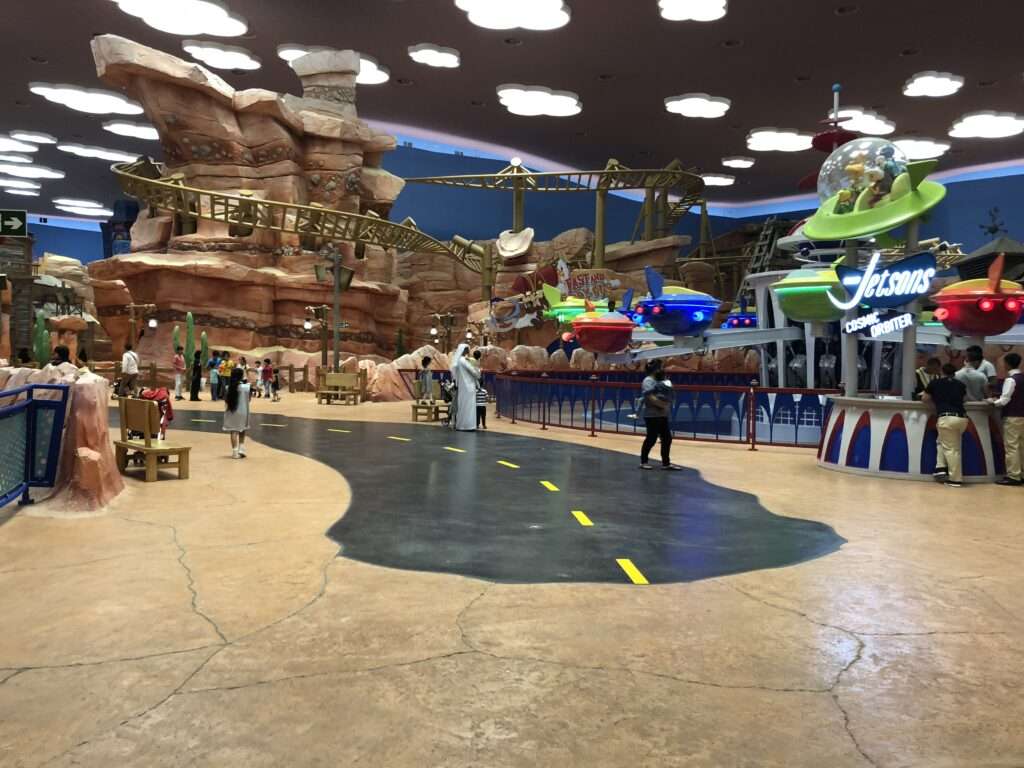
2018 – Warner Bros. World Abu Dhabi – Nearly all the AV, projection, media, lighting and special effects throughout the park are supported by ISAAC.
2019 – RealMotion used ISAAC to develop a system to ingest content into the server to manage and synchronize millions of content elements for multimedia shows on the façade of the guitar-shaped Seminole Hard Rock Hotel & Casino (Hollywood FL)
2019 – ISAAC is adopted into Pursuit’s FlyOver attractions, starting with FlyOver Iceland in Reykjavik.
2022 – Smart Monkeys is an Illuminarium technology partner, with ISAAC in the multimedia control backbone of these innovative experience venues.


